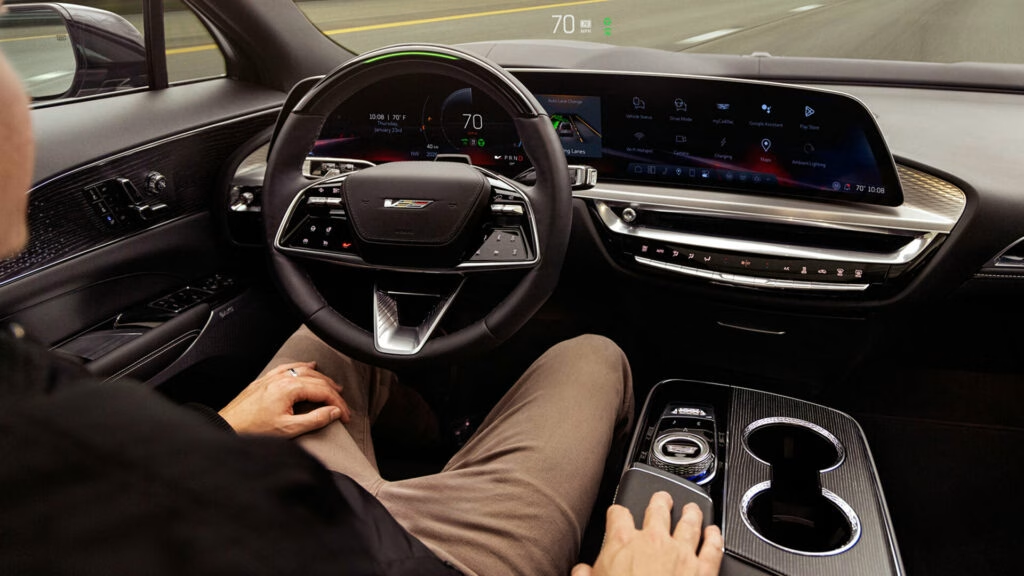Why Is GM Doubling Down on Autonomous Driving After the Cruise Setback?
GM’s journey with autonomous vehicles has been anything but straightforward. After launching Super Cruise in 2017—a hands-free driving system that turned heads and set a benchmark for driver assistance—GM dove headfirst into the robotaxi game with Cruise Origin. But late last year, the company hit the brakes on its robotaxi ambitions, essentially shuttering Cruise and laying off around 1,000 employees. That could have been the end of the story. Instead, GM is gearing up for a fresh push into self-driving tech, but this time, the focus is shifting from public robotaxis to privately owned vehicles.
What’s driving this renewed ambition? A big part of it is leadership. Sterling Anderson, who previously led Tesla’s Autopilot program and co-founded Aurora, joined GM as chief product officer in May. Anderson’s track record speaks volumes—he’s helped shape some of the most advanced autonomous systems on the road. Insiders say he’s convinced that the future of driving is hands-off, and he’s determined to make sure GM doesn’t get left behind.
How Is GM’s Strategy Shifting From Robotaxis to Personal Vehicles?
The robotaxi dream isn’t dead, but it’s definitely on pause. After the Cruise debacle, GM made it clear: the new priority is developing advanced driver assistance systems (ADAS) for personal vehicles. That means putting the power of autonomy directly into the hands of everyday drivers, not just fleet operators or ride-hailing companies.
Why this pivot? The robotaxi market has proven tougher than expected—regulatory hurdles, safety concerns, and public skepticism have all slowed progress. Meanwhile, consumer appetite for smarter, safer personal vehicles keeps growing. According to a 2024 survey by the Insurance Institute for Highway Safety, over 60% of new car buyers say advanced driver assistance features are a top priority. GM’s Super Cruise already covers more than 400,000 miles of mapped highways in North America, and the company is betting that expanding these capabilities will win over drivers who want convenience without giving up control.
What Does GM’s Renewed Hiring Mean for the Future of Self-Driving Cars?
Here’s where things get interesting. GM is reportedly reaching out to some of the very Cruise employees it let go, hoping to bring their expertise back into the fold. The company hasn’t said exactly how many will return, but the move signals a serious commitment to ramping up development.
This isn’t just about filling seats. It’s about leveraging hard-won experience—both successes and failures—to accelerate progress. The goal? To develop a fully autonomous vehicle that can operate without active human oversight. In industry terms, that means aiming for a Level 3 or Level 4 system, where the car can handle most or all driving tasks under certain conditions. Level 5, where no human intervention is ever needed, remains the holy grail—but it’s still a ways off.
How Will GM’s Approach Differ From Tesla and Other Rivals?
GM isn’t the only automaker chasing the autonomous dream, but its approach stands out. While Tesla’s Full Self-Driving (FSD) system relies heavily on cameras and neural networks, GM’s Super Cruise uses a combination of lidar, radar, high-definition maps, and driver attention monitoring. This multi-layered approach has earned praise from safety advocates and regulators alike.
Bringing in Sterling Anderson, who’s worked at both Tesla and Aurora, could help GM blend the best of both worlds—agility and safety. Anderson’s vision reportedly centers on making autonomy as seamless and reliable as possible for the average driver, not just tech enthusiasts. That means focusing on real-world usability, not just flashy demos.
What Are the Biggest Challenges Ahead for GM’s Autonomous Ambitions?
Let’s be real: the road to full autonomy is littered with potholes. Technical hurdles, regulatory uncertainty, and public trust remain major obstacles. The National Highway Traffic Safety Administration (NHTSA) continues to scrutinize self-driving systems after several high-profile incidents, and states like California have tightened rules for autonomous testing following safety lapses.
GM’s renewed focus on private vehicles could sidestep some of the regulatory headaches facing robotaxis, but it also means the company must convince everyday drivers that these systems are safe, reliable, and worth the extra cost. According to a 2023 AAA study, only 22% of Americans say they trust self-driving cars—a number that’s barely budged in recent years.
Still, GM’s track record with Super Cruise gives it a leg up. The system has logged millions of miles with a strong safety record, and the company’s willingness to learn from past mistakes—by rehiring experienced engineers and doubling down on robust testing—could make all the difference.
What’s the Real-World Impact for Drivers and the Auto Industry?
If GM pulls this off, the implications are huge. Imagine commuting on the highway while your car handles the steering, braking, and lane changes—freeing you up to relax, answer emails, or just enjoy the ride. For people with disabilities or those who can’t drive, the technology could be life-changing.
On a broader scale, widespread adoption of autonomous features could reduce accidents, ease traffic congestion, and even reshape urban planning. The Boston Consulting Group predicts that by 2030, up to 25% of new cars sold could have advanced autonomous capabilities. That’s not science fiction—it’s a future that’s rapidly approaching.
The big takeaway? GM’s renewed push into autonomous driving isn’t about perfection—it’s about smarter adjustments. Start with one change this week, and you’ll likely spot the difference by month’s end. The self-driving revolution won’t happen overnight, but with the right mix of experience, technology, and a willingness to learn from the past, GM is betting it can help steer us all into a safer, smarter future.

